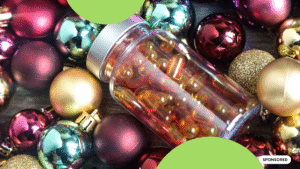For many, the arrival of shorter days and longer nights brings more than cooler weather—it can trigger a heavy, persistent sadness. Seasonal affective disorder (SAD), formally recognized in the 1980s, describes depression that appears in autumn or winter and lifts with spring.
Ancient texts, such as the Yellow Emperor’s Classic of Medicine from around 300 BC, recognized the influence of seasons on health and recommended adjusting sleep and activity with the natural cycle. Modern research now confirms that seasonal changes in human mood are closely tied to biology.
Dr Cathy Wyse, a chancellor’s research fellow at the University of Edinburgh, notes that a major advance in recent years is understanding that seasonal mood shifts are likely endogenous, forming part of our physiology. Large-scale studies, including the UK Biobank, have allowed scientists to track seasonal patterns in hundreds of thousands of people over years.
SAD is a subtype of major depression or bipolar disorder. Symptoms include low mood, lethargy, increased sleep, and carbohydrate cravings. The condition is closely linked to reduced daylight, which regulates the circadian clock, hormone release, and alertness. When daylight is limited and artificial light dominates evenings, biological rhythms can become misaligned.
Some populations, such as the Amish in the US who spend more time outdoors and less under artificial light, experience some of the lowest rates of SAD among Caucasians. In contrast, urban areas like New York report prevalence rates around 4.7%. Individuals with bipolar disorder may be especially sensitive to seasonal cues, with manic episodes peaking in spring and depression in darker months.
Seasonal biology affects more than mood. Researchers have identified annual fluctuations in over 4,000 protein-coding genes and changes in blood cell composition. Wyse’s team recently analyzed four years of UK Biobank sleep data from half a million participants, finding longer yet lower-quality sleep during winter.
The most effective treatment remains bright light therapy, which helps reset circadian rhythms and reduce melatonin levels, boosting alertness. Morning exposure to natural sunlight is also powerful. Studies show that just one hour of blue-enriched light can improve reaction times more than two cups of coffee.
Cognitive behavioral therapy tailored for SAD can be equally effective, helping people adapt to winter rather than only managing symptoms. Maintaining regular sleep routines, limiting late-night screen exposure, and spending time outdoors can also alleviate symptoms.
Experts recommend planning winter activities to reclaim enjoyment despite darker months. Cosy rituals, social interactions, and outdoor exercise help combat seasonal slumps. Persistent mood changes, sleep disruption, or lack of motivation should prompt consultation with a healthcare professional.
In the UK, Mind offers support at 0300 123 3393 and Childline at 0800 1111. In the US, Mental Health America can be reached at 988 or 988lifeline.org. In Australia, support is available via Beyond Blue at 1300 22 4636, Lifeline at 13 11 14, and MensLine at 1300 789 978.







